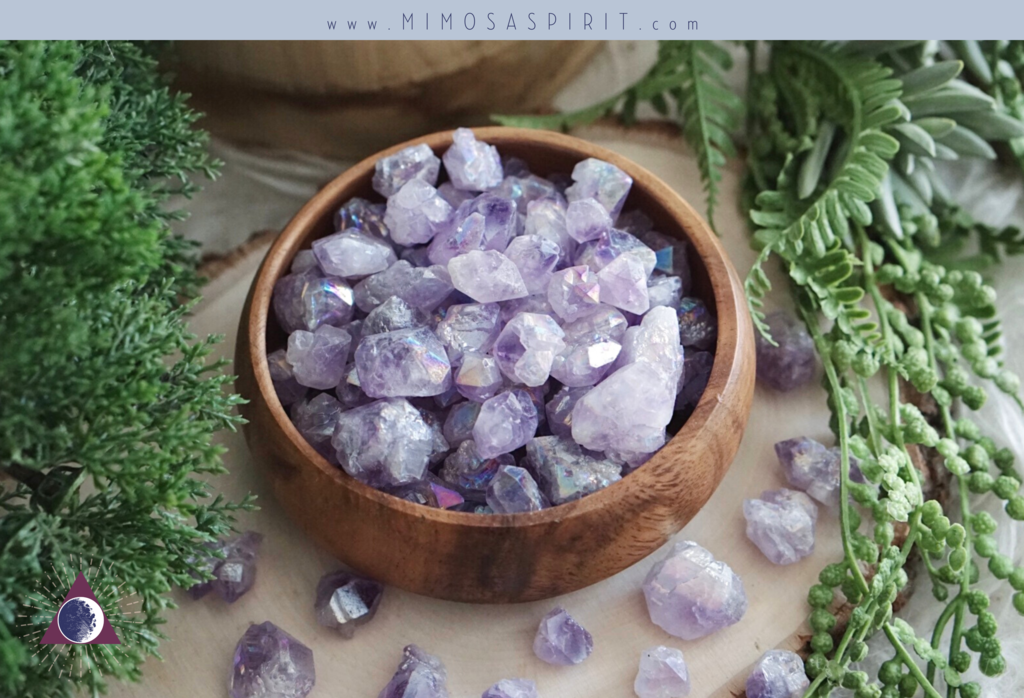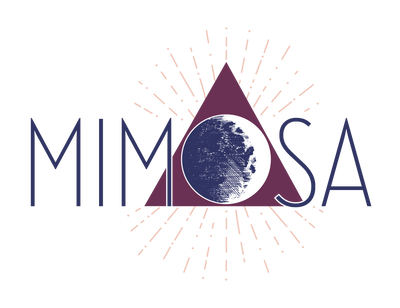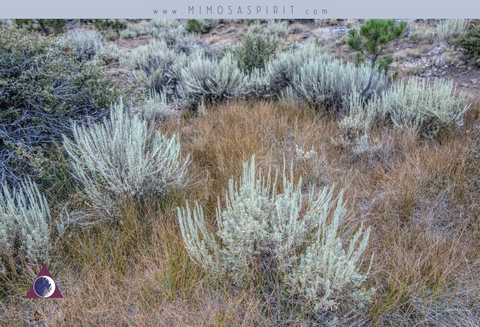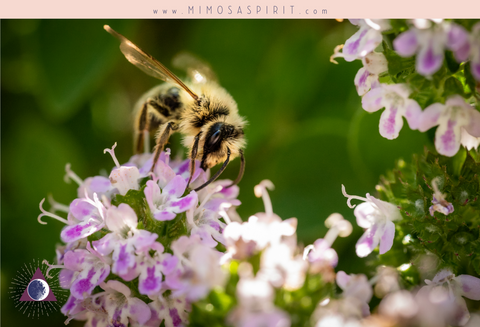
Frequently Asked Questions About Crystals
People have a lot of questions about crystals, and we're happy to share their enthusiasm! Here are some of the most common questions we hear from our customers about the stones we carry.
So I just bought a crystal. Now what do I do with it?
There are so many things you can do with crystals! You can carry one in your pocket, or several in a small pouch. When the purpose of the crystal has to do with your everyday life, this is often a good bet.
Here are some of our other favorite uses for crystals:
- Wear it as a pendant – you can wire wrap your stone, commission an artist to create jewelry out of it, or get an inexpensive cage to keep it in.
- Keep some on your desk at home or the office for inspiration and focus. We love Rainbow Fluorite and Aragonite for this!
- Keep your crystals close while you sleep on your bedside table or under your pillow. This is a good choice if you want the crystal to work through your subconscious or dreams, to promote lucid dreaming, or simply to calm bad dreams and promote restful sleep. Choose a crystal that corresponds to the goal you have in mind - high-vibe stones like Labradorite and Lapis Lazuli are recommended for those exploring lucid dreaming, whereas Howlite and Amethyst may be better for restful sleep.
- Place protective stones on your windowsills or elsewhere in your home to banish negative energy and keep you feeling at peace in your sacred space.
- If you have a collection of stones and a set goal in mind, try creating a crystal grid! You can read much more about them in our blog post Creating Your Own Crystal Grids.
Remember, the possibilities are endless – and there is no book of rules for working with your stones! Experiment and see for yourself what resonates.
Where do all these crystals come from?
We buy from many different sources: gem shows, general distributors, specialized crystal warehouses, out-of-the-way rock shops, and dealers we cross paths with. If we know where a crystal was mined, we'll share the source. Unfortunately, sometimes we just plain don't know. We can try to make an educated guess.
This is easy with minerals that only come from one location, like Mystic Merlinite (Madagascar) or Larimar (Dominican Republic). Sometimes we can also judge by appearance. For example, Turquoise can come from a lot of places, but we can guess that a lower grade piece is probably from China, whereas higher quality pieces often come from the American Southwest.
Whenever possible, we source our crystals from vendors who pay workers fair wages and adhere to best environmental practices. Ethically sourced crystals often cost more, but we think these issues are very important to consider (especially when selecting tools for healing and therapeutic purposes!)
Are the crystals at Mimosa natural or manmade?
Almost all of our stones are natural, but a few are either manmade or need human help to achieve the forms you see in the store.
Here are some common manmade stones:
- Goldstone and Opalite are glass containing ground-up metals or minerals.
- Orgonite is a manmade plastic with mineral and metal inclusions.
- Bismuth is a natural element, but has to be isolated from its usual companion minerals to form the little pyramid shapes we sell.
- Some citrine is actually heat-treated amethyst. (More on this in a bit.)
- Aura quartzes are natural quartz exposed to metallic vapor. (Keep reading for more on this, too.)
- A lot of turquoise is reconstituted, meaning it's real turquoise that's been ground up and reformed. Sometimes coloring or adhesive are also added.
- Dyed blue Howlite is sometimes marketed as Turquoise. (If the price seems too good to be true, it often is.)
- Very bright blue or pink agate slices are usually the result of a natural stone being dyed. We generally do not stock dyed stones at Mimosa.
- Crackle Quartz starts as regular quartz that is heated and often dyed to give its characteristic webbing pattern over the crystal's surface.
Some crystal healers choose not to work with stones that have been created or modified by humans, while others value the various added properties that these treatments can bestow. For example, it can be very difficult to come by a material like Titanium on its own, but as part of an Aura Quartz it's more readily accessible.
We'll always be up front with you about what our items are made of! We do not market items as naturally occurring unless we know for a fact that they are, and we clearly designate anything that has been artificially treated as such.
Our advice is to give working with any material that you feel drawn to a try – you never know what could happen! And even if you don't feel compatible with a stone energetically, there's nothing wrong with keeping some items in your collection just because they are pretty to look at.

What is the difference between rough and tumbled stones?
Which is better: a rough crystal, or one that's been polished? We hear that question all the time at Mimosa. Some say the form of the stone makes no difference. In our experience, though, crystal energy exists in rough, cut and tumbled stones – but the more natural the form, the more direct the transmission of that energy.
Most people we've consulted tend to feel more raw power coming from rough stones. But in some circumstances, softer energy is more appropriate. And sometimes other considerations (such as toxicity) make tumbled stones the better choice as a buffer between the raw nature of the stone and the practical realities of human needs.
Obviously, there's not total agreement on this topic, and there likely never will be. But we typically advise professional crystal healers to have both rough and tumbled stones in their toolkit. The rest of us can usually be confident in following our intuition.
If, like many people, you feel stronger energy coming from rough stones, you'll want to take that into consideration when choosing your crystals. But that doesn't mean rough is always better. If safety, aesthetics, and/or desire for a softer energy lead you to tumbled stones, that's the right choice for your circumstances.
Does size matter?
It's not the most important thing, but yes, sometimes size makes a difference. After all, symbolism is part of magic, and every stone is unique. Size is one characteristic of the individual stone that contributes to its certain symbolic meaning.
So even though black tourmaline of any size helps protect your home, a pebble in the corner may tend to be forgotten, whereas a substantial chunk next to the front door will act as a daily visual reminder to stave off negative vibes!
What about different shapes?
Shapes can make a difference too! Here are some common ones and their uses:
- Wands are especially good for directing energy.
- Rounded stones help with comfort and healing.
- A pocket, palm or worry stone is great to carry with you as a daily reminder of your intentions and goals.
- Generators (also known as towers or points) and pyramids pull in energy.
- A Merkaba connects you with the spiritual realm, including angels and guides. (Read more about Merkabas and Sacred Geometry here.)
- Seer stones are designed for scrying, helping you "see" with your intuition.
- Heart carvings symbolize love (in all its forms – platonic, familial, romantic, and even self-love.)
- Eggs are associated with fertility, renewal, and new beginnings.

How can I tell natural from heat-treated citrine?
The biggest tip-off is the color of the stone. Natural citrine (pictured above) tends to be a pale, champagne-gray yellow – not surprising, since it has the same chemical makeup as smoky quartz. Natural citrine also tends to have high translucence. It's a gorgeous material, but its scarcity makes it a little pricier than the commonly found heat-treated citrine.
Heat-treated citrine is created by exposing amethyst to high temperatures (in the neighborhood of 1000 degrees). It can range from brighter yellow to orange to brown, depending on the level of heat it was exposed to. Many of the citrine tumbles, points, and clusters you'll find on the market – particularly the more affordable ones – have been heat-treated.
Since heat-treated citrine starts its life as amethyst, its mineral makeup differs from that of natural citrine. The two have basically the same metaphysical properties, yet heat-treated citrine is physically different. It has also been artificially exposed to intense heat, which some say alters the stone's energy.
We stock both natural and heat-treated citrine at Mimosa, and we work with both in our healing and personal practices.
What are wands?
Wands direct energy. As a healing tool, they move healing energy to specific parts of the body. They can also direct energy to another crystal or some other object, preparing it to receive your intention. Some wands have seven smaller crystals attached because they're designed to work with the chakras. On others, one end is rounded while the other comes to a gentle point. These wands are designed for massage.

Is Aura Quartz real or artificial?
Aura quartz is manufactured from natural quartz and metallic elements. To create it, quartz is heated to extreme temperatures (about 1600 degrees) and exposed to vaporized metal. A thin, iridescent film of metal clings to the surface of the crystal. Different metals or combinations of metals produce different colors.
Some healers prefer not to use these stones as they are not completely natural (i.e. they are a “man-encouraged” creation). However, others consider these stones to be useful healing tools. Although the process for making these stones is not carried out within the earth, the stones are made of all natural components. There are no man-made or synthetic additives (such as plastics or dyes). Many believe that the quartz simply acts as a natural amplifier to the metals bonded to it.
For example, Aqua Aura Quartz is Quartz that has been coated in pure, 24k Gold. The thin layer of Gold atoms on the surface of the Quartz would not generally be enough to use for healing purposes. However, the energy of the Quartz crystal enhances and amplifies the energy of the Gold to the extent that it can be successfully used for healing.
Read much more about Aura Quartz and all of its different varieties in our blog post, Aura Quartz for Vibrancy and Wonder!
We hope you've learned something new from this blog post! If you have more questions, please feel free to ask them in the comments or contact us.





0 comments